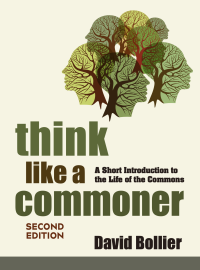The announcement that Wal-Mart will soon build a superstore in Hadley, Massachusetts – the town adjacent to mine, Amherst – has provoked fear and loathing among many of us in the Pioneer Valley. People are rightly proud of the things that are unique and distinctive about this area, and big-box superstores are not part of that equation. Amherst was one of the few places in the world known to have convinced McDonald’s to leave town. People here take pride in the local arts and music scene.
As the local culture starts to come to grips with the brutal Wal-Mart ethic, it stirred me to think anew about the tensions between global markets and local community. How can a community possibly fortify that which is local and unique in the face of a well-oiled market juggernaut? I’ve always appreciated Michael Shuman’s Going Local: Creating Self-Reliant Communities in a Global Age, and the work of David Morris at the Institute for Local Self-Reliance. Both give good advice on how we can pay more attention to the “economics of place” and force capital to respect the local and the social. But when mainstream economists and even liberals praise the virtues of unfettered capital mobility, this can be a hard sell.
Ultimately, taming capital so that it will respect the commons will require us to nurture our local cultures. Just recently I discovered a wonderful little book, Place-Based Education: Connecting Classrooms & Communities, by David Sobel, and published by Orion magazine. The book describes strategies by which schools can quicken our appreciation of nature and community, which are intimately connected. We’re not likely to take care of our local natural resources if we don’t care about our local community. The goal of “place-based education” writes Sobel, is “the reintegration of the individual into her homeground and the restoration of the essential links between a person and her place.”
An example: A school in Berkeley started a vegetable garden, which led it to develop connections with local farmers to supply food for lunches. People began to ask, why ship in freeze-dried burritos from a Midwest food processor when local farmers threatened by suburban sprawl are happy to serve the local market? The “secondary effects” may be as important as the market transaction itself: new sinews of community develop. School kids learn something about their local community and how the world works. Local farmers gain a more secure local clientele.
In my area, Dean’s Beans, a locally based fair trade coffee supplier, convinced the community hospital to forgo its national supplier and buy local. Once you consider the economic multiplier effect of recycling those dollars locally and the community goodwill that results, buying local is an easy choice. It just takes a little thought and effort.
One of the most exciting developments has been local businesses getting organized to defend their local economies and cultures. Judy Wicks, owner of The White Dog Café in Philadelphia, started out small in this respect. At her restaurant, she celebrated the gardens and community murals in Philadelphia, and made it a point to buy food from local organic farmers. A few years ago, Wicks founded the Business Alliance for a Local Living Economy, now a thriving international alliance of independently operated local business networks dedicated to buying and selling locally as much as possible.
It’s too early to know how the likely fight over the Wal-Mart superstore will go. But if we locals are going to prevail, we’ll have to puncture the empty free market slogans, show the actual community costs of big-box colonization, stand behind local businesses and community-friendly policies (even if prices are sometimes higher), and nurture a real love for what’s local and distinctive.











Recent comments